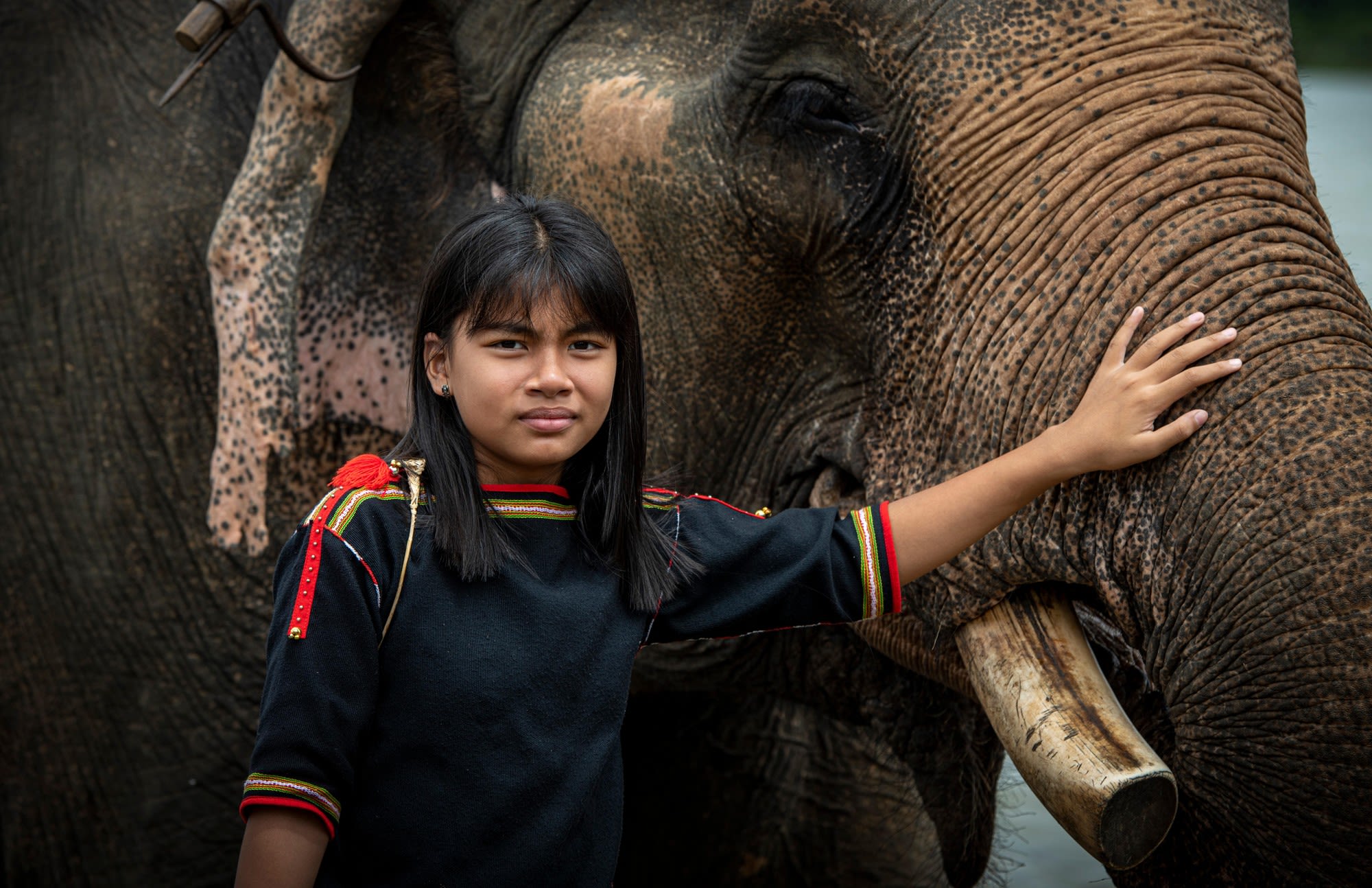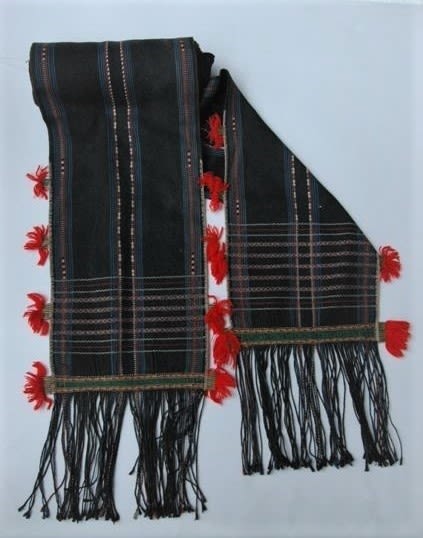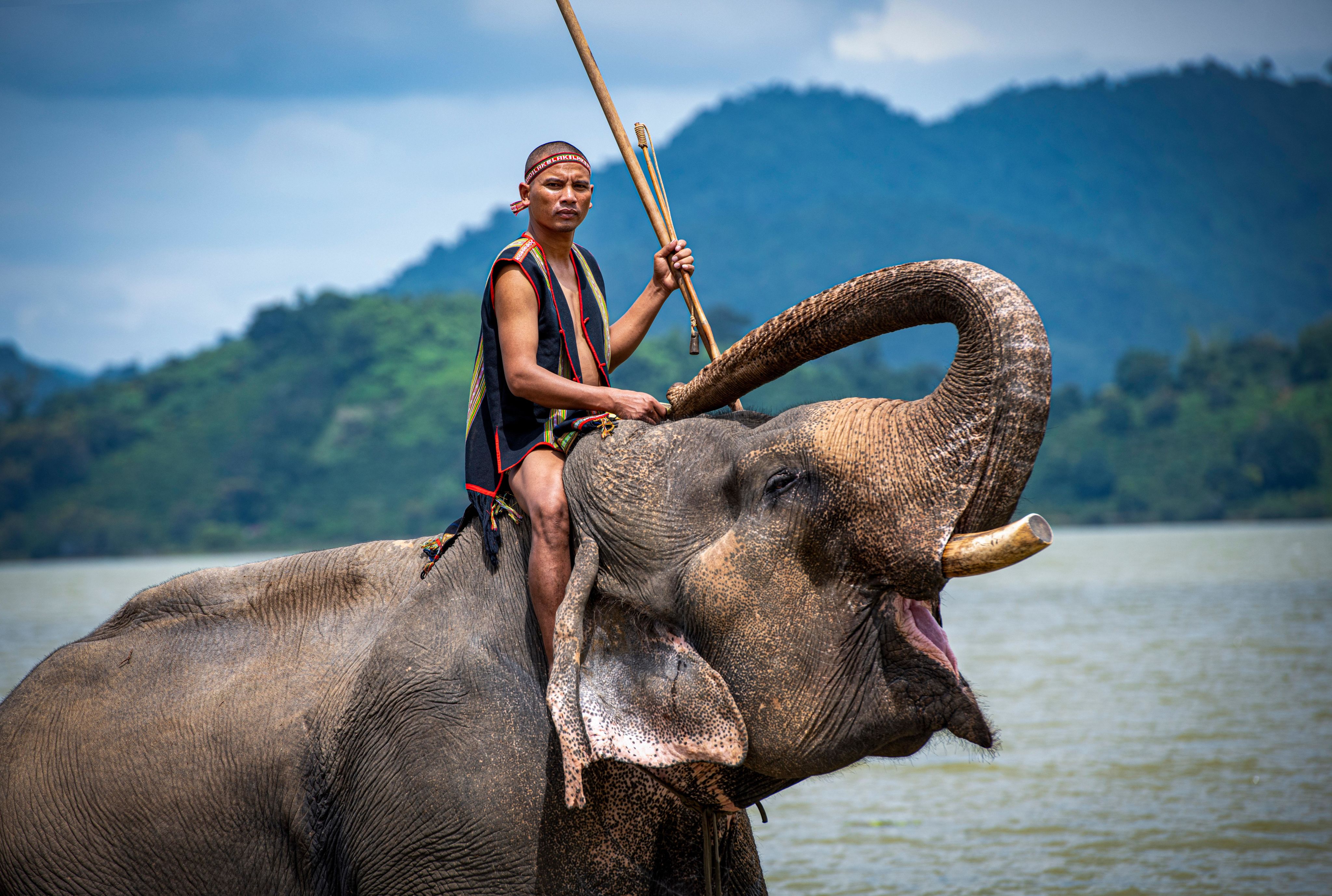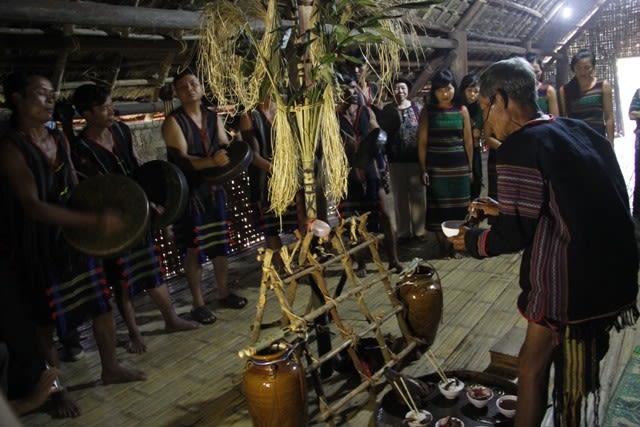
Formed and developed at the hearts of the Central Highlands region, the Mnong ethnic group has many traditional customs, helping establish itself as one of the owners of the regional culture.
1. Historical origin
Mnong etnic group is one of 12 local ethnic groups who have lived for a long time in the Central Highlands. They are among the masters of regional culture. In other words, the Mnong ethnic group plays an important role in socio-economic development, as well as in preserving and promoting the culture of the Central Highlands.
The Mnong people also have other names: Pnong, Mnong Nong, Mnong Pré, Mnong Bu dang, DiPri, Biat, Mnong Gar, Mnong Ro Lam, Mnong Chil, and Mnong Kuen.
2. Geographic distribution
Mnong people reside across 51 out of 63 cities and provinces. Most of them live in the south-western region of the Central Highlands in the two provinces of Dak Nong and Binh Phuoc, as well as the south-western provinces of Dak Lak and Lam Dong.

A young Mnong ethnic girl poses with an elephant (Photo: Thanh Dat)
A young Mnong ethnic girl poses with an elephant (Photo: Thanh Dat)
3. Population, language
Population: According to the Survey of 53 ethnic minorities issued on April 1, 2019, there are 127,334 Mnong ethnic people in Vietnam, including 62,002 men and 65,332 women. The household size is 4.5 people per household. 93.8% of the population lives in rural areas.
Language: The Mnong ethnic language belongs to the Mon Khmer language group (Southern Asian language family). However, the vocabulary of Mnong ethnic language is partly influenced by the Ede ethnic language, which belongs to the Malayo-Polynesian language group.
4. Main features
Traditional social institutions: The Mnong people gather together in a Bon (village). In which, the head of the Bon is elected by the people and operates for a term. There are usually about ten households in a small Bon, while the big Bon are sometimes home to a few dozen households - where many generations of Mnong people live together. Families in Bon are related by neighbour, by blood, and by marriage. In which, the society is traced back through maternal lineage.
Housing: Depending on regions and localities, the houses of Mnong people is built into the ground or on stilts. Specifically, the Mnong Rlam sub-group in the Lak Lake area built high stilt houses according to the architectural style of the Ede ethnic people.
However, Mnong people today often live in houses built in the architectural style of Kinh ethnic group, which have higher sustainability and safety.

A ritual in the ceremony worshipping the gate of the Bon (Photo: Ethnicity and Development Newspaper)
A ritual in the ceremony worshipping the gate of the Bon (Photo: Ethnicity and Development Newspaper)
Clothing: On hot days, Mnong ethnic men used to be half-naked and wear a loincloth while women wore a skirt without a shirt on. However, the costumes of Mnong people today are significantly influenced by the Kinh ethnic group. Their favourite accessories include gold and bronze bracelets and multi-coloured beads.
Religions and beliefs: Regarding religions and beliefs, Mnong ethnic group can be divided into two subgroups: those following traditional beliefs, and those practicing Protestant and Catholic beliefs. The subgroup of Mnong people who follow traditional beliefs see all things to be animistic and they worship many gods that they believe exist, influence their life. Meanwhile, religious Mnong subgroups put absolute faith in a single God and have abandoned the traditional customs of their ethnic group.
Diet: Mnong people eat rice cooked in terracotta pots, or in bamboo tubes. When working in the fields, they often eat sour porridge contained in dried gourds. The Mnong people like to drink alcohol, and smoke or "chew" tobacco.
Musical instruments: Instruments of the Mnong people are quite diverse, including gongs, trumpets, buffalo horns, monochord, 8-stringed lutes, and vertical flutes. A primitive stone instrument dated to the mid-twentieth century was also found in the Mnong living area.

A black loincloth of Mnong ethnic men (Photo: Ethnicity and Development Newspaper)
A black loincloth of Mnong ethnic men (Photo: Ethnicity and Development Newspaper)
Education: According to the 2019 survey on 53 ethnic minority groups, the rate of Mnong ethnic people aged 15 years and over who can read and write is at 73.3%, while the net attendance rate for children of primary school age is 104.1%, junior secondary school age is 72.1%, and senior secondary school age is 34.3%. The percentage of out-of-school children is 24.9%.
Marriage: In the ancient Mnong society, same race marriage was quite strictly regulated, but now there has appeared interracial marriage. The Mnong ethnic couples usually stay at the wife's house after marriage, and in some places, the couples must live in the groom’s and bride’s houses before moving out to live separately.
Festivals: The buffalo stabbing festival is the most important traditional festival of the Mnong ethnic people. At the end of the annual rice harvest season, each village hosts a festival to give thanks to the gods of heaven and earth and to the god of rice.

Photo: THANH DAT
Photo: THANH DAT
5. Economic conditions
Farming in the slash-and-burn method is the main way of living of Mnong people. They harvest rice by hand. They also cultivate rice in the marshy areas, using buffalo to plough the fields and then sow the seeds. Along with agricultural production, hunting and gathering also play an important role in their daily lives.
The Mnong people also practice the crafts of knitting household items, and growing and weaving cotton. In each village, there are some people who know how to make hand-shaped and open-fired pottery products. Especially Mnong ethnic people in the Buon Don area are very famous for hunting and taming wild elephants.

The ceremony of worshiping the first rain of the season of the Mnong ethnic people. (Photo: Vietnam Ethnic Culture-Tourism Village)
The ceremony of worshiping the first rain of the season of the Mnong ethnic people. (Photo: Vietnam Ethnic Culture-Tourism Village)
According to the survey of 53 ethnic minorities dated April 1, 2019, the unemployment rate is 1.07%; the percentage of trained workers with certificates is 5.4%; the percentage of the labour force involved in non-agricultural activities is 6.1%; and the percentage of the labour force at management level or high and middle-level technical jobs is 1.7%. The poverty rate in Mnong ethnic community is 42.2%; the rate of near-poor households is 15.4%. The percentage of households getting access to clean water is 88.5%, and the percentage of households getting access to electricity is 97.7%.